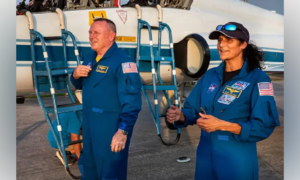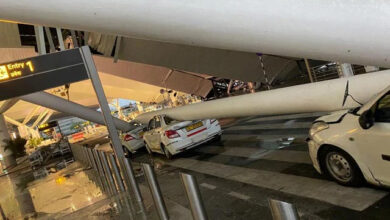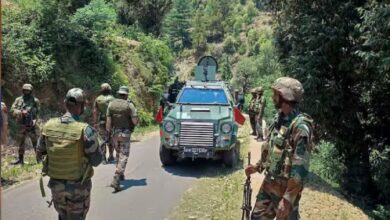Sunita Williams flies to ISS on NASA’s Boeing Starliner tonight; 3rd time in space for Indian-origin astronaut
Washington, DC [US], June 1 (ANI) Indian-origin Sunita Williams’ piloted ‘Starliner’ is set to launch into space on Saturday, after the joint mission of US space agency NASA and aircraft major Boeing was previously hit by snags.
The flight will mark Williams’ third space mission.
According to NASA, the flight to the orbiting International Space Station (ISS) is scheduled to lift off from Florida’s Kennedy Space Centre around 10 pm Indian Standard Time today.
‘Suni’ Williams and fellow NASA astronaut Barry ‘Butch’ Wilmore will be the first humans to go aboard Starliner spacecraft as part of the US space agency’s Commercial Crew Program.
The Starliner spacecraft will be catapulted into space on an Atlas 5 rocket of the rocket company United Launch Alliance (ULA). It will dock with the ISS on Sunday and the astronauts will be at the ISS conducting a range of tests for about a week. Starliner will then undock from the ISS re-enter Earth’s atmosphers and make a parachute and airbag-assisted landing in the southwestern United States on June 10, NASA said.
If this mission is successful, NASA will begin the final process of certifying Starliner and its systems for crewed rotation missions to the International Space Station.
The Starliner capsule will carry four astronauts, or a mix of crew and cargo, for NASA missions to low Earth orbit.
NASA, Boeing, and ULA (United Launch Alliance) are ready for the June 1, launch of the agency’s Boeing Crew Flight Test according to an announcement during a prelaunch media briefing from NASA’s Kennedy Space Centre in Florida.
“I’m very proud of the teams who have worked really hard the last two and a half weeks to prepare for launch,” said Steve Stich, manager, NASA’s Commercial Crew Program. “We’re really ready to go fly” he said.
The integrated ULA Atlas 5 rocket and Starliner spacecraft stack rolled out to the pad at Space Launch Complex-41 at Cape Canaveral Space Force Station on May 30 in preparation for liftoff.
Both Williams and Wilmore had remained in preflight quarantine inside the Neil A. Armstrong Operations and Checkout Building following their return to the Florida spaceport on May 28.
Mission managers of the Boeing Starliner’s Crewed Test Flight (CFT) called off the mission on May 7, just two hours before the scheduled launch due to a valve glitch in the Atlas 5 rocket’s upper stage. Boeing said in its statement that the valve was successfully replaced on May 11 and tested to confirm it was working properly.
Later on May 14, NASA announced that the CFT mission scheduled for May 17 has been pushed to no later than May 21 due to what it described as a “small helium leak” in the spacecraft’s service module.
On May 17 the space agency said that the launch was further pushed back to May 25.
The flight marking Boeing’s first Starliner spacecraft mission with a human crew, is part of NASA’s Commercial Crew Program, which is working with the US aerospace industry through a public-private partnership to launch astronauts on American rockets and spacecraft from US soil.
NASA selected Boeing and SpaceX in September 2014 to transport crew to the International Space Station from the United States. These integrated spacecraft, rockets and associated systems will carry up to four astronauts on NASA missions, maintaining a space station crew of seven to maximize time dedicated to scientific research on the orbiting laboratory.
After a failed attempt in December 2019, Boeing conducted a successful uncrewed Orbital Flight Test 2 (OFT-2) in 2022. Its Starliner is expected to be reusable for up to ten missions within a six-month turnaround time, according to the aerospace company.
Elon Musk-owned SpaceX company’s Crew Dragon has performed 12 crewed missions since its first launch on May 30, 2020.
Williams and Wilmore were both former commanders of the International Space Station.
Williams, from Needham, Massachusetts, earned a physical science degree from the US Naval Academy, and a master’s in engineering management from the Florida Institute of Technology.
Her first spaceflight was Expedition 14/15 (from December 2006 to June 2007) launching on space shuttle Discovery’s STS-116 mission to reach the International Station, according to NASA.
While onboard, Williams established a world record for women at the time with four spacewalks. She concluded her tour of duty by returning to Earth with shuttle Atlantis’ STS-117 flight to land at Edwards Air Force Base in California on June 22, 2007.
Selected as an astronaut by NASA in June 1998, Williams has spent a total of 322 days in space on two missions and accumulated 50 hours and 40 minutes of cumulative EVA time on seven spacewalks.
Williams worked with Roscosmos on its contribution to the space station and with the first Expedition crew.
Meanwhile, 61-year-old, Wilmore has logged 178 days in space and has 25 hours and 36 minutes of time on four spacewalks.
Boeing has planned six manned missions for the platform over the next six years, the projected end of the ISS’ operating lifespan.
NASA plans to use both SpaceX’s Dragon and Boeing’s Starliner to send up astronauts at least every six months from US soil. Both Boeing and SpaceX were given the responsibility in 2014 by NASA to send commercial crew missions to the ISS.
Boeing received over USD 4 billion in US federal funds to develop the Starliner, while SpaceX received about USD 2.6 billion.





